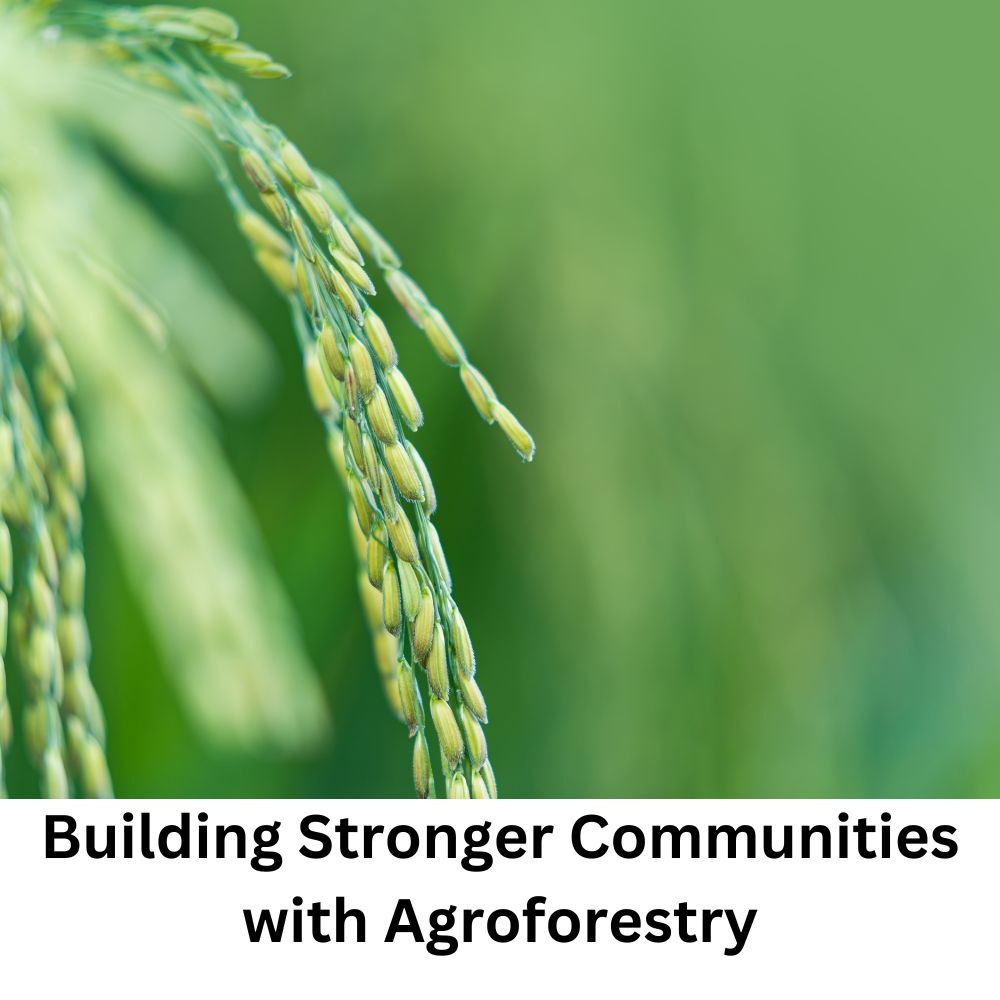Introduction
Agroforestry, the practice of integrating trees and shrubs into farming landscapes, is more than an agricultural technique; it catalyzes community development. This 1500-word article explores how agroforestry fosters sustainable land use, strengthens community bonds, enhances food security, and contributes to socio-economic resilience.
Agroforestry: A Brief Overview
Agroforestry combines agricultural and forestry technologies to create more diverse, productive, and sustainable land-use systems. This practice has been part of human farming systems for centuries, offering a variety of benefits, including enhanced biodiversity, improved soil health, and increased crop yields.
Strengthening Community Bonds through Shared Resources
One of the primary ways agroforestry builds stronger communities is through the shared management of resources. Community-based agroforestry projects encourage members’ collaboration, fostering unity and shared purpose. These projects often involve collective decision-making, resource sharing, cooperative labor, and strengthening social ties and community cohesion.
Enhancing Food Security and Nutrition
Agroforestry systems can significantly improve food security. Diversifying crop production provides communities with various food products throughout the year. Trees and shrubs in agroforestry systems can be sources of fruits, nuts, and leaves, contributing to a more nutritious diet. Moreover, agroforestry practices can make crops more resilient to climate extremes, ensuring a more reliable food supply.
Economic Benefits and Livelihood Diversification
Agroforestry offers numerous economic benefits to communities. By diversifying farm production, it opens up multiple income streams. Communities can benefit from selling timber, fruit, nuts, and other non-timber forest products. Furthermore, agroforestry can reduce the need for expensive inputs such as fertilizers and pesticides, as integrated trees and shrubs can enhance soil fertility and help in pest control.
Empowering Women and Marginalized Groups
Agroforestry can play a significant role in empowering women and marginalized groups within communities. These practices often involve cultivating minor crops and non-timber forest products, which women or marginalized groups traditionally manage. By giving them control over these resources, agroforestry can enhance their economic independence and status within the community.
Sustainable Land Management and Environmental Stewardship
Agroforestry is a form of sustainable land management that can foster a sense of environmental stewardship among community members. The practice encourages the conservation of natural resources and promotes biodiversity. This shared responsibility for environmental health can strengthen community bonds and ensure the long-term sustainability of local ecosystems.
Education and Skill Development
Implementing agroforestry often requires training and education, which can benefit community development. Workshops and training sessions provide opportunities for community members to acquire new skills and knowledge, which can be applied to improve their farming practices and contribute to the community’s overall economic development.
There are numerous examples of successful community-based agroforestry projects worldwide. For instance, introducing agroforestry practices in Kenya has led to improved livelihoods and stronger community ties. In Latin America, agroforestry systems involving coffee and cocoa production have enhanced economic and environmental outcomes for local communities.
Challenges and Solutions in Community-based Agroforestry
While agroforestry offers many benefits, it poses challenges, particularly in community dynamics. These challenges include land ownership issues, limited market access, and the need for long-term investment. Addressing these challenges requires policy support, market development, and community engagement.
Policy Support and Institutional Frameworks
Adequate policy support is crucial for the success of community-based agroforestry. Governments and international organizations can provide technical support, facilitate market access, and offer financial incentives. Additionally, creating institutional frameworks that support cooperative structures can be beneficial.
Market Development and Access
Developing markets for agroforestry products is essential for the economic sustainability of these systems. This involves finding markets for products and ensuring that communities receive fair compensation. Establishing cooperatives and community enterprises can help achieve better market access and higher value for agroforestry products.
The Role of Technology and Innovation
Technology and innovation can play a significant role in enhancing the effectiveness of agroforestry in community development. From precision farming tools to mobile applications for market access, technology can improve productivity and connect communities to broader markets.
Community Engagement and Participation
Successful agroforestry initiatives require active community engagement and participation. This involves including community members in the planning and decision-making and ensuring that agroforestry practices align with local needs and cultural practices.
Education and Capacity Building
Continued education and capacity building are vital for sustaining agroforestry practices. This includes ongoing training in agroforestry techniques, business skills, and environmental stewardship. Education programs can be integrated into local schools and community centers to foster a culture of learning and development.
The Future of Agroforestry in Community Development
The future of agroforestry in community development looks promising. As awareness of its benefits grows, more communities will likely adopt these practices. Integrating agroforestry into regional and national development plans can further enhance its impact.
Conclusion
Agroforestry is more than a farming practice; it’s a tool for building more robust, resilient communities. Agroforestry can play a central role in sustainable community development by fostering collaboration, enhancing food security, providing economic benefits, and promoting environmental stewardship. Its success, however, depends on the collective effort of community members, support from policymakers, access to markets, and ongoing education and training. As communities worldwide embrace agroforestry, they are improving their livelihoods and paving the way for a more sustainable and interconnected world.
This article provides an in-depth look at how agroforestry contributes to building stronger communities, covering its benefits, challenges, and strategies for successful implementation. It highlights the multifaceted role of agroforestry in enhancing community resilience, economic development, and environmental sustainability.
